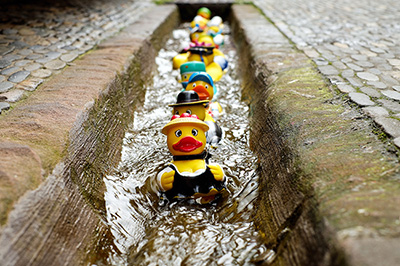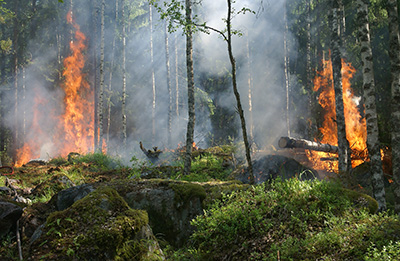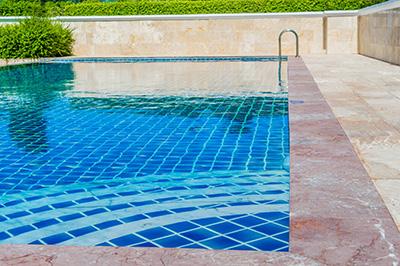Craziest Things Found in Your Plumbing

As plumbers we never know exactly what we’re walking into when someone calls with a clogged drain or a toilet that won’t flush, but usually it’s something fairly common causing the clog. Every once in a while though we find some really crazy things in your plumbing. Here are a few of the most unique items found by plumbers around the country.
One California plumber was startled to discover that a clogged toilet contained the customer’s lost set of both upper and lower dentures! That plumber really made his customer smile. An Ohio plumber found a set of 4 class rings from 1969 and had the pleasure of tracking their owners down and reuniting long lost high school buddies.
One family’s teenager got creative with changing the toilet paper roll and flushed both the old cardboard roll, as well as the plastic toilet paper holder. Apparently the young man thought each new roll of toilet paper came with the holder in the middle. His parents were less than thrilled with the cost of needing a plumber to educate their son on this topic. Many kids have flushed items that have required visits from the local plumber. Everything from toy cars, to plastic dinosaurs, to Barbie have made their way into the household plumbing.
Another plumber unclogged a Starbucks toilet and found hundreds of dollars of cash shoved in there. Apparently another man had robbed a bank earlier in the day, locked himself in the Starbucks bathroom, and hid the cash in the toilet to come back later for it. In another local business ,a plumber found a driver’s license and a yo-yo had been flushed and were causing the back-up.
One plumber was cleaning out a septic tank and found a prosthetic leg in it. He decided to clean it up and take it home as a trophy. In another bathroom the local plumber found a stick of deodorant and a pair of heart shaped sunglasses in the toilet.
While most of this is just silly it does serve a purpose to remind our customers to be careful what you put down your family’s plumbing lines. If you don’t want to be listed as one of these crazy stories, only human waste and a reasonable amount of toilet paper is intended to be flushed.
Fighting Forest Fires
 While forest fires rage in California and other areas, everyone in the Boise area understands the risk they pose as well. As plumbers we think about the water side of fighting a forest fire. How much water is used? Where does it come from? How is it brought in? Can they use sea water in California? So we did a little research and here’s what we found.
While forest fires rage in California and other areas, everyone in the Boise area understands the risk they pose as well. As plumbers we think about the water side of fighting a forest fire. How much water is used? Where does it come from? How is it brought in? Can they use sea water in California? So we did a little research and here’s what we found.
The amount of water used to fight a fire will vary dramatically of course depending on the size of the first. An average year in California, for example, will require millions of gallons of water in order to fight forest fires. As droughts are becoming more and more of an issue, firefighters are getting creative with other fire suppressants, using bulldozers to clear wider paths to prevent the fire from spreading, and other techniques all designed to reduce water usage while still extinguishing the fire.
If there are sufficient reservoirs or rivers in the area, helicopters are used to bring in large buckets of water to dump on forest fires, but as this is becoming harder to find other techniques are being employed. More water is being brought in by firefighters than ever before using bladder bags that can be carried in by pack mules or ATV. Large trucks carrying up to 30,000 gallons of water are also being used to bring in water from further away. All of the water available in a region is carefully monitored throughout fire season to allow fire fighters to have the most current information on where to go to draw water.
Sea water is both a yes and a no in terms of its usage for fighting fires. Technically it can be used the same as any other water source to effectively put out a fire. It’s still water so it will put the fire out, but it has some downsides which often prevent it from being used. It can’t be piped through plumbing as it will corrode the metals and cause substantial damage. It also can’t be used anywhere that has agricultural lands near by because it will make the land barren. So in most situations sea water isn’t a viable option.
It truly is critical that consumers both reduce risky behavior that increases the chance of causing a forest fires, as well as control their usage of water if we’re going to give our firefighters the best chance at putting out any fires that do occur.
Swimming Pool Plumbing
 As the heat continues many people consider jumping on an “end of year special” for a pool and they run into some common plumbing questions. There are some considerations to keep in mind when getting that new pool set-up as well as when it’s time to shut it down for the winter.
As the heat continues many people consider jumping on an “end of year special” for a pool and they run into some common plumbing questions. There are some considerations to keep in mind when getting that new pool set-up as well as when it’s time to shut it down for the winter.
What type of pipes should I use for my pool plumbing?
It’s recommended that you use rigid PVC pipe with a wall thickness or “schedule” of at least 40 PVC. Schedule 20 PVC is what will be most commonly found at hardware stores, but the walls on this piping is too thin and it’s not worth the risk. Contact a plumbing supplier to purchase schedule 40 or 80 PVC to be sure you’re installing plumbing that will stand the test of time. Flexible PVC hose is the next best option. It’s not as high quality as the more rigid PVC, but is considered generally acceptable for pool use.
How deep do I bury the pipes for my pool?
The minimum depth to bury plumbing is 2’ to avoid damage from freezing in the winter, as well as to protect the pipes from surface soil shift and slip. While some areas of the country allow for shallower pipes, in the Boise area 2’ is the minimum recommended.
When will I need to close my pool for the season?
When the water temperature remains consistently below 65°it’s time to shut it down for the year. Make sure to contact a pool professional to get your water tested prior to shut down and get the correct chemicals in the water before the long winter.
Do I have to drain my pool for the winter?
Most pool manufacturers recommend that the water level be drained to below the skimmer level, which will allow you to clean out the plumbing system and avoid freezing and potentially burst lines. It’s not recommended that you completely drain your pool. The clean water with the proper winterizing chemicals in it will actually help protect your pool through the winter. Having some water in the pool protects the lining from drying out and cracking, as well as from the potential of tearing when debris falls in the pool.
What do I need to do to properly shut down for the winter?
It’s important that you blow all of the water out of the plumbing and pump mechanism prior to freezing. Even the smallest amount of water in the pipes will freeze, expand and likely cause damage. Prior to doing this, be sure to give your pool a thorough cleaning. Use a pool brush and scrub both the walls and floor, then manually vacuum up all of the stuff you just loosened while brushing. After this you’ll add the necessary chemicals for the winter and then lower the water level. Remove and clean the filters before storing them. Now it’s time to blow the water from the lines. Pool plumbing is not designed to withstand a tremendous amount of pressure, so blowing out the lines is actually a somewhat delicate process that should only be attempted if you’re confident you know exactly what you’re doing. For most people, and certainly for the first time or two, it’s strongly recommended that you hire a professional for this step. If you choose to do it yourself read the manual carefully and be sure to follow every step.
Bottled Water vs. Tap Water

There are dozens of bottled water options available at local stores and gas stations, but is there really a benefit to drinking bottled water verses tap water? Is there a benefit to one brand of bottled water over another or is it just personal preference? Consumption of bottled water has sky rocketed from 1976 where each American consumed 1.6 gallons of bottled water a year, up to 2014 where each American drank 34.2 gallons per year. A recent survey of consumers found that most people are drinking bottled water for one of four reasons – taste, health, convenience or fashion.
While health is a primary reason people choose bottled water, the research done comparing bottled water and tap water has shown that there are no substantial differences in terms of safety. The Environmental Protective Agency regulates tap water while the Food and Drug Administration oversees bottled water. Both have very similar safety standards for the water to adhere to, thus resulting in no notable differences in the safety to consumers. In the vast majority of the country the tap water is completely safe to drink.
In some areas there are some substantial differences in the taste between the tap water and bottled water. Some people find tap water to taste metallic, flavorless or flat while they find the bottled water to be more natural and crisp. You certainly can’t beat the convenience of bottled water, but the cost is substantial. Both in terms of dollars and cents as well as generated waste, bottled water doesn’t come cheap. There has been a major push recently to encourage consumers to use reusable water bottles to reduce waste but so far the impact has been minimal.
Interestingly, a large number of consumers confessed that they choose bottled water because it’s fashionable. They choose a specific brand because of the statement they perceive that it makes about them. Certain brands definitely market to this base of buyers with sleek designs, beautiful bottling and impressive marketing. It seems that popularity of one brand over another comes down almost entirely to personal preference. In plain bottled water there are no health or safety differences between brands, largely because of the incredible amount of regulation surrounding water requirements. Regardless of whether you choose bottled, tap or some of both, the water you’re drinking is the best thing you could be putting in to your body.
Past Plumbing Newsletters





